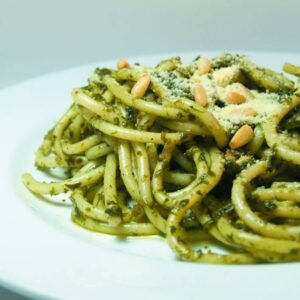
We’ve just wrapped up the January issue of Healthy Food Guide (yes, we live our lives in the future here). This issue includes the annual Healthy Food Awards, where we acknowledge the manufacturers whose foods and products are healthy, delicious and just that extra bit special.
We’ve found some very worthy winners. But there are also some items we found along the way that made us a bit cranky. These are the things we feature in our ‘Hall of Shame’. They’re food products whose marketers have attempted to give them a ‘health halo’ – to create the impression that they are healthy, when in fact they’re anything but.
Packaged foods can be a bit of a minefield for this (another reason to eat fresh, whole, unprocessed foods as much as possible). Of course there are packaged foods that are great, healthy additions to our diets – you just need to know how to navigate your way through the claims.
Be careful with anything featuring a ‘free from’ claim. There’s a lot more ‘sugar-free’ or ‘no-added-sugar’ stuff on the shelves these days, in response to our growing interest in cutting down on the sweet stuff. But don’t assume this means the product is glowingly healthy. The claim ‘sugar free’ can cover a multitude of sins. It may have no actual cane sugar, but still contain fruit purées, honey, syrups of various kinds or dried fruit. These are, sad to say, still just sugar by another name. And check the other ingredients, too. A sugar-free food is not your friend if it’s loaded with saturated fat or salt. Likewise ‘fat free’ or ‘low fat’ on labels can be a good thing; for example reduced-fat milk is a great idea. But it can also be a mask for unwanted sugars, as you may see in some low-fat fruit yoghurts or cereals. And ‘fat free’ on a product like lollies is just a nonsense. We all know these are not health foods and never will be.
Gluten-free is another claim that does not confer magical healthy properties. Yes, there are perfectly healthy gluten-free foods. But it is equally possible to eat a very unhealthy diet made up of gluten-free junk food. Ditto for dairy-free and organic foods.
Vegetarian food could be another trap. There’s a lot that’s great about a vegetarian or vegan diet – but you could take a wrong turn if all you ate was highly-processed, refined ‘vegetarian-friendly’ foods.
So what’s the upshot of all this? How do we shop smart and choose the best, not the worst, packaged foods? The answer is not news: be a label reader. Yes, it may take a little bit of extra time, but if you’re smart with label reading you’ll avoid the foods with health halos. Look at the ingredients lists and compare ‘per 100g’ columns, not ‘per serve’.
Lastly, keep your antennae up and alert to outlandish claims. They’re everywhere, and often have a science-y sounding theory behind them, but don’t accept them at face value. I think of this when I see the TV ad for the Nutribullet blender. They don’t call it a blender. They call it a “Superfood Nutrition Extractor” and claim it “turns ordinary foods into super foods!” It’s a shame, really, since it looks like a pretty good blender, but no appliance short of a magic wand can turn ordinary foods into ‘super foods’ – and if it did, what does that mean, anyway? Be sceptical and as with anything, if it sounds too good to be true, it probably is. Just look for the halo.
www.healthyfood.com










